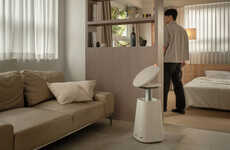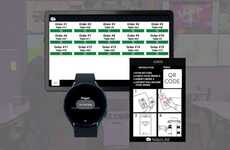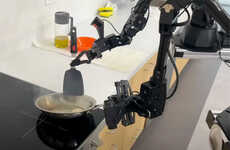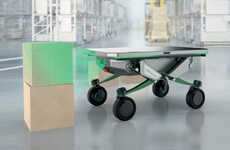
Modular Interiors are Designed with the Help of Robot Assembly
Alyson Wyers — October 19, 2015 — Art & Design
References: asmbld & springwise
These reconfigurable interiors are possible thanks to robot assembly. Robots are already used to improve the efficiency of production in a number of other industries, most notably the automotive sector. The DOM Indoors project shows how architectural robotics can make a difference in the areas of homes and housing as well as style and design.
From New York-based company asmbld., the project DOM Indoors consists of a team of tiny robots that rearrange small modules in reconfigurable rooms in just minutes. The robots are stored beneath the floor boards when they are not in use. This allows people living there to maximize their space.
The system is installed in open spaces on top of existing flooring. Users can create a design for the room on a smartphone, which is then executed via robot assembly.
From New York-based company asmbld., the project DOM Indoors consists of a team of tiny robots that rearrange small modules in reconfigurable rooms in just minutes. The robots are stored beneath the floor boards when they are not in use. This allows people living there to maximize their space.
The system is installed in open spaces on top of existing flooring. Users can create a design for the room on a smartphone, which is then executed via robot assembly.
Trend Themes
1. Modular Interiors - The trend towards modular interiors offers opportunities for disruptive innovation in home design and space optimization.
2. Architectural Robotics - The use of architectural robotics in homes and housing opens up possibilities for automation and personalized living environments.
3. Robot Assembly - The application of robot assembly in various industries, such as home design and style, can lead to increased efficiency and customization.
Industry Implications
1. Home Design - The home design industry can leverage modular interiors and architectural robotics to create innovative and flexible living spaces.
2. Construction - The construction industry can explore the use of robot assembly to streamline the building process and reduce labor costs.
3. Interior Design - The interior design industry can incorporate robot assembly and modular interiors to offer personalized and adaptable design solutions for clients.
4
Score
Popularity
Activity
Freshness























